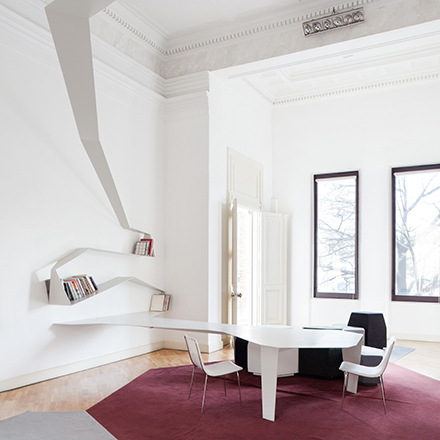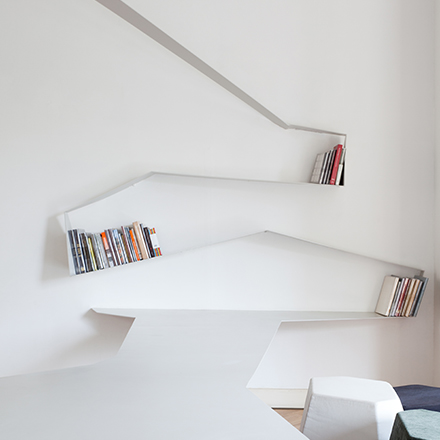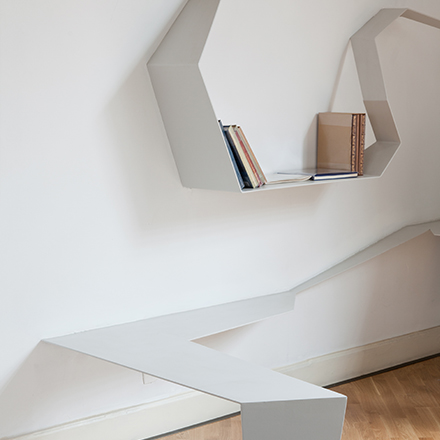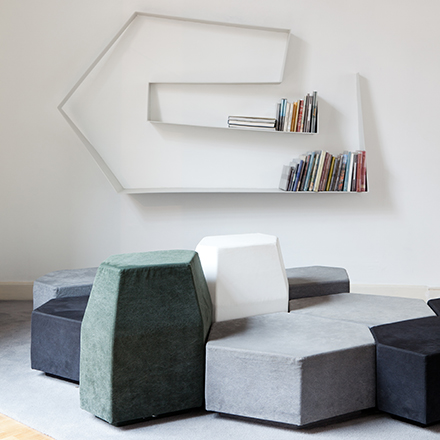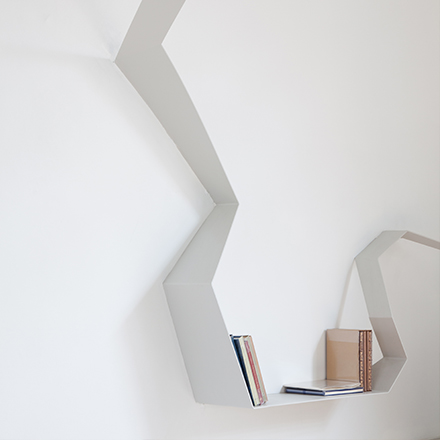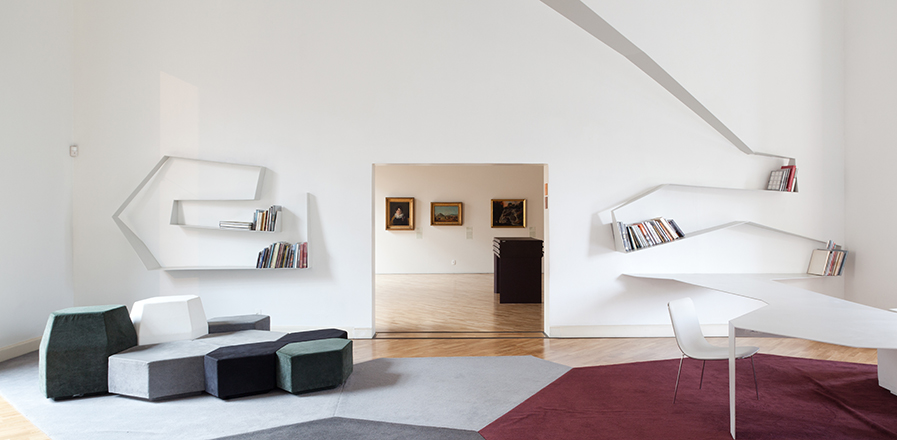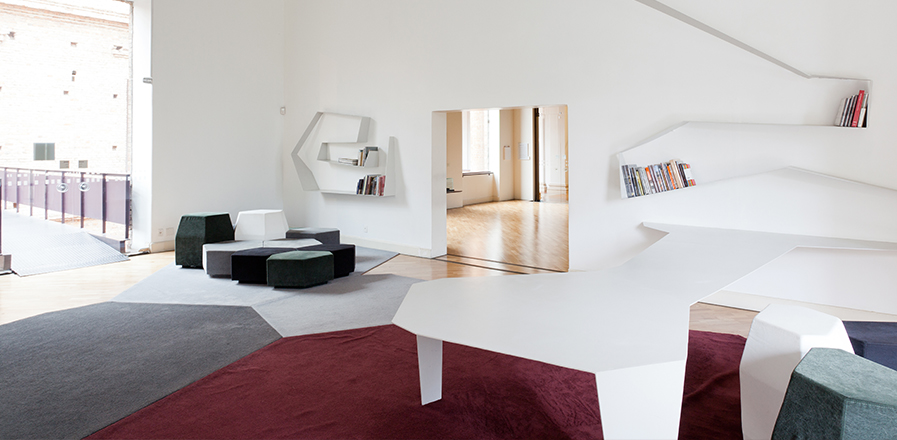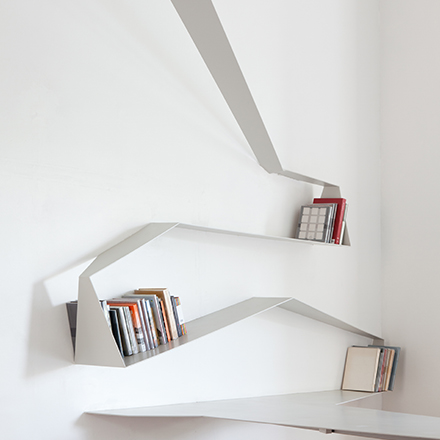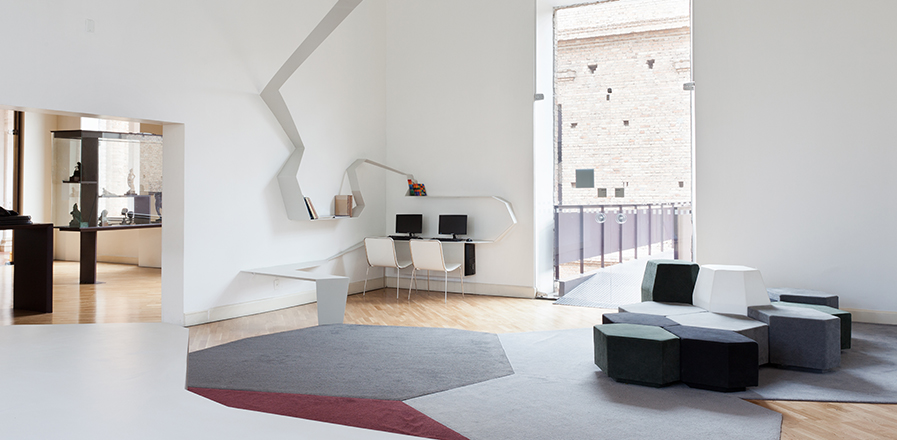This building designed by Ramos de Azevedo in the late 1800s has symmetry as one of its main organization elements. Renovations conducted by Paulo Mendes in the 1990s recreate circulation inside the building, including great orthogonal axis of the elevator and the passages. It also altered the access of visitors, which is now made through what used to be the side of the building. The museum’s adaptation also transforms its former outside area into an inside area with a glass covering on its old yard with its Octagon.
Our design derives from observation of these features, seeking to establish a positive tension relationship by including a diagonal line. The program proposed that visitors had a space within the museum so that they could internalize the experience of visiting its exhibitions. For this, in this room there are books and catalogues related to the works and the artists that are part of the institution’s collection, as well as two computers with access to images and information about works in the collection that are not being physically exhibited.
